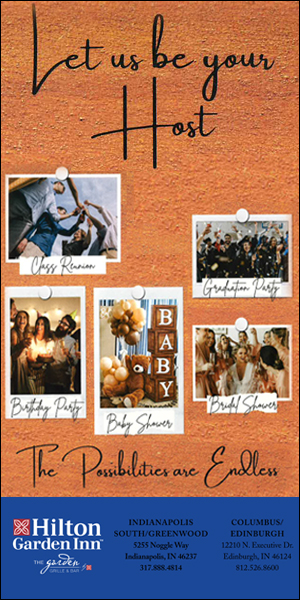Johnson County Museum Keeps History Fresh And Local
By Scott Hall | Photography by Josh Marshall
If the word “history” conjures dry, dusty images in your head, you might be surprised by what’s happening in a stately neoclassical building just north of Franklin’s Courthouse Square.
At the Johnson County Museum of History, visitors can still learn about local life from prehistory through the 19th and 20th centuries. But lately, young staffers and a legion of loyal volunteers have been finding innovative ways to tell these time-honored stories while appealing to new generations of visitors — and financial supporters — with quirky exhibitions and hip special events designed to challenge preconceptions about the museum’s role in the community.
Take, for example, an installation on the history of the video game that opens in November. In collaboration with local retailers, the show will include four playable game stations representing stages in the evolution of the technology, dating back 30 years to the debut of Nintendo.
“One of the challenges I face is that people don’t understand that modern history is still history,” says David Pfeiffer, the museum’s curator since early 2013.
Joining him in this campaign is the museum’s even newer director, Jasper native and DePauw University grad Carrie Birge. Both are still in their 20s, but they wield master’s degrees and considerable experience in various museum and history-related settings. They’re geeky about the subject matter but savvy enough to know they are competing in a busy marketplace to engage the families and young professionals who represent the institution’s future.
Housed in a former Masonic Lodge on Main Street, the museum attracted 8,800 visitors last year, but organizers are shooting for 10,000 this year, with a particular eye toward attracting folks from the bustling suburbs around Greenwood, where Indianapolis-oriented residents don’t always identify with Johnson County as a community. (continues on page 72.)
(Continued from page 70.)
Birge, who began work in January, also wants to appeal to her own generation, the 25 to 40 demographic. One such initiative is the new Young Friends group, a $15 annual membership level in the Johnson County Historical Society, the nonprofit structure that oversees the museum.
The first Young Friends event will be Cannonballs and Cocktails on Oct. 3, featuring new additions to the museum’s Civil War display, a punch made from a 19th-century recipe and a stroll down the street to the also historic Artcraft Theatre for a screening of “Gone With the Wind.”
“I want to create a good, solid relationship with that age group,” says Birge, who isn’t shy about noting revenue, sponsorships and partnerships among her top priorities. “It’s something the generation ahead of us has been so good at doing.”
Alongside events, however, the staff continues to beef up the museum’s collections and standing exhibits, the ones that fit the more conventional definition of history.
There’s still an 1830s-vintage log cabin next to the parking lot, representing the early European settlers. The main floor still houses artifacts from prehistory through the Victorian era, continuing through the 20th century with items from a 1930s doctor’s office, Camp Atterbury’s World War II heyday and the post-war era of drive-ins, soda shops and gainful auto industry jobs.
Among other planned updates, the Civil War room soon will host interactive stations to appeal to younger visitors, as well as a replica cannon — pivotal in a historic battle involving local soldiers — that will provide a centerpiece for the Cannonballs event. The Victorian display is gaining a green-screen photo booth where visitors can dress up in period fashions.
Incorporating new technology is a key operating principle for the staff. “I want to make sure we’re always on the edge of that,” Birge says.
A new standing attraction under development will explore the rich history of transportation in Johnson County, including covered wagons, plank roads, freight trains, interurban commuter lines, interstate highways and airports. The interactive exhibit will open sometime in 2015 in the museum’s lower level.
The basement already is home to the Genealogy & Local History Library, one of the museum’s busiest attractions. Public records, city directories, maps, school yearbooks, family and church histories, microfilmed newspapers and other primary sources from a multicounty area make it a destination for folks tracking their roots, as well as an increasing number of families researching the backgrounds of their fixer-upper historic homes.
“They love seeing their house with the 1930s car in front of it,” Pfeiffer says.
Down the road, the staff hopes to build on these resources by putting photos and documents online and perhaps selling prints of the images on file. There’s already a gift shop on the main floor, stocked with museum-branded merchandise and reading selections from local authors and historians.
The museum also is making greater use of its upstairs auditorium, renovating and booking more community events into the unique space.
“It’s good for revenue, just to reach more people and keep them coming to the museum,” Birge says.


